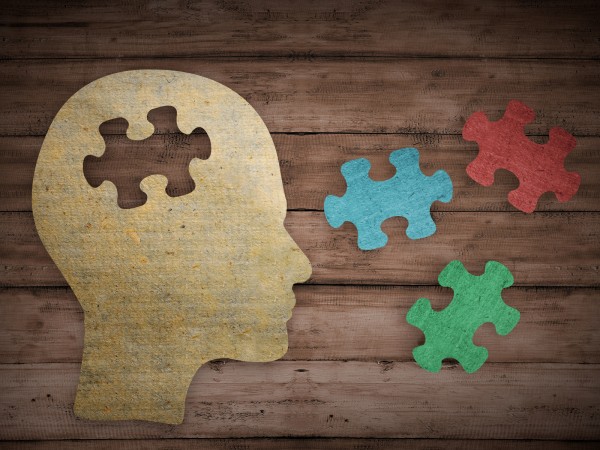![]()
Personality assessments are great tools in a variety of situations. They can help with team start up when a team is newly formed. Personality assessments can be useful for individual coaching sessions. Also, they are wonderful for ongoing team building to sustain the engagement of the team. In rare cases, they can also help troubleshoot dysfunction with individuals or teams. You are about to learn quite a bit about me while I discuss the various assessments that my team administers to the rest of our organization.
Myers-Briggs Type Indicator (MBTI) – According to most sources, Myers-Briggs Type Indicator (MBTI) is “an introspective self-report questionnaire designed to indicate psychological preferences in how people perceive the world and make decisions.” Individuals fall somewhere on a range of four indicators: Extrovert or Introvert, Sensing or Intuitive, Feeling or Thinking, and Judging or Perceiving. I am an ENTP (Intuition is designated as an “N” since Introversion already took the “I”). What does this mean? Well, I like to look at other peoples’ shoes as opposed to my own. I prefer to create my own interpretations and expound upon things. If I had to relocate an entire apartment complex, I would focus on the logistics first. However, I will always stay open to new information and new input. I consider myself a warrior-poet as described by early western or eastern philosophy. According to a fun MBTI poster, I am most like Sirius Black from the Harry Potter books.
DiSC – “DiSC” stands for Dominant, Influential, Studious, and Conscientious. Before you ask, I am not quite sure why the “i” is lower-case instead of capitalized. The instrument itself is “a personal assessment tool used to improve work productivity, teamwork, and communication.” DiSC really looks at two aspects to arrive at one of the four profiles: How direct or indirect are you? How do you foster relationships? As an influencer, I like persuading others, promoting openness, and using relationships to accomplish things. I have a difficult time being by myself and I definitely do not like being ignored. I am direct but not as direct as someone who is dominant. I really like the DiSC assessment because the results are pretty straightforward, but the instrument can also do a deeper dive into “classical profiles” with terms like “counselor” or “appraiser.”
True Colors – If you are looking for fun, look no further. Like DiSC, True Colors groups individuals into four colors: Blue, Gold, Green, and Orange. The True Colors assessment is “a personality profiling system used to categorize learning styles and to identify strengths and challenges in the core personality types.” Blues are all about the “warm and fuzzy.” Golds believe in order and like planning. Greens wear the analytical hat. Oranges are outgoing and spontaneous. Can you guess which one I am? My lowest scoring color is Blue, which I try to be cognizant of every day. I don’t mean to overlook peoples’ emotions. As an Orange, I realize that my poor planning looks like I’m running roughshod over everyone else. I’ve attended a few True Colors sessions and noticed that if you want to have the most fun, put out things like balloons that address the four colors or even M&Ms with the four colors separated out.
Strengthsfinder – Strengthsfinder is “a way to discuss and develop peoples’ unique combination of skills, talents, and knowledge – also known as strengths.” I have to be honest. We are only just now exploring Strengthsfinder in our organization. We are currently piloting the assessment with our Human Resources leadership team. I just took my assessment the other day in preparation for the upcoming session. My top five strengths: Futuristic, Strategic, Command, Competition, and Woo. What does it all mean? I don’t know. Stay tuned, and I will hopefully have wonderful things to report and will be able to give more insights into the logistics of this assessment.
TS Hamilton is part of the GovLoop Featured Blogger program, where we feature blog posts by government voices from all across the country (and world!). To see more Featured Blogger posts, click here.





Another one I would highly recommend is the Strength Deployment Inventory (SDI). The two SDI assessments we use here at GoA are the Motivational Value System (MVS) which looks at the WHY of your behaviour when things are going well, and what happens when you move into conflict and the Strengths Portrait. I have used this with both teams and individuals and they have found it highly valuable in terms of increasing relationship intelligence.
Thank you for sharing, Carolyn. We are putting together a “toolkit” as a way of organizing all of our assessments and team building sessions. I will look at adding the SDI as well!
The Conflict Dynamic Profile measures behavioral attributes. Since behaviors can be learned and changed, it is a useful tool and resource for easing personal and group work conflicts, especially when used in conjunction with mediation.
Several groups with which I work have switched to the Hartman Color Code, which I highly recommend. The Color Code identifies what motivates people. It’s easier to learn than the other systems. Most important of all, it has a greater impact on the workplace, because it comes with tools to recognize the motivations of other people and specific guidance on how to improve interaction with them.
Thanks for sharing. I’m actually taking a class now for Organizational Management and we are on the topic of personality assessments, but they did not mention True Colors, DISC, SDI, Conflict Dynamic Profile, or Hartman Color Codes. I will make sure to mention in my discussions.